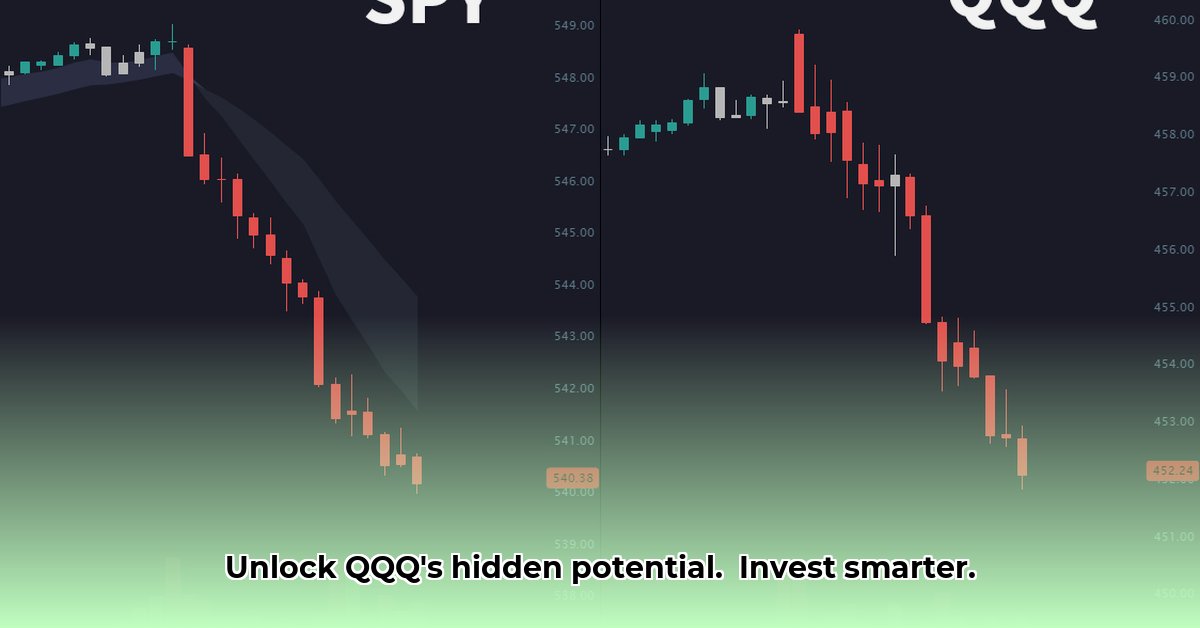
Understanding QQQ: Your Ticket to Tech Giants
The Invesco QQQ Trust (QQQ) isn't just a collection of letters; it's your gateway to investing in some of the world's most innovative technology companies. This exchange-traded fund (ETF) (a type of investment fund traded on stock exchanges) tracks the Nasdaq-100 index, a carefully curated list of the 100 largest non-financial companies listed on the Nasdaq Stock Market. Think Apple, Microsoft, Google, and many more – all in one convenient package. By investing in QQQ, you're essentially diversifying your investment across a basket of leading tech firms, reducing the risk associated with putting all your money into a single stock.
QQQ and Webull: A Seamless Investment Partnership
Webull, a popular mobile brokerage app, simplifies the process of investing in QQQ. Its user-friendly interface makes buying and selling shares incredibly easy. Importantly, Webull typically offers commission-free trading on many stocks, including QQQ, meaning you retain more of your investment earnings. The app also provides real-time stock quotes and helpful charting tools to support informed decision-making. This combination of accessibility and functionality makes Webull a powerful platform for managing your QQQ investments.
Navigating the Risks and Rewards: A Balanced Perspective
While the potential returns from QQQ can be exciting, it's crucial to understand the inherent risks. The tech sector is renowned for its volatility; rapid price swings are commonplace. A market downturn could significantly impact your investment, highlighting the need for a well-defined risk management strategy. Moreover, sector-specific downturns and global events can cause ripple effects across the tech industry, affecting QQQ's performance. However, historical QQQ performance (although not indicative of future results) demonstrates long-term growth potential, mirroring the expansion of the tech sector. This makes it important to approach QQQ investment with a long-term viewpoint, allowing for these market fluctuations to become part of the overall investment strategy.
Risk Mitigation Strategies: Practical Steps
- Diversification: Don't rely solely on QQQ. Diversify your portfolio across numerous sectors and asset classes to lessen the overall impact of any one sector's fluctuations.
- Dollar-Cost Averaging (DCA): Invest a fixed amount regularly, regardless of the market's current state. This mitigates the risk associated with investing a lump sum at a market peak.
- Stop-Loss Orders: Set a predetermined price point for automatic selling; this helps limit potential losses if the price falls below the thresholds you pre-select.
Actionable Strategies for QQQ on Webull: A Step-by-Step Guide
- Open a Webull Account: Download the app and create an account. This typically involves basic demographic information and potentially some financial verification.
- Fund Your Account: Deposit funds through your linked bank account. Webull generally offers a variety of secure deposit methods.
- Search for QQQ: Locate the Invesco QQQ Trust (QQQ) within Webull's search function.
- Place Your Order: Specify the number of shares you'd like to purchase. Consider dollar-cost averaging to spread your investment across several purchases.
- Set Stop-Loss Orders (Optional): If desired, set stop-loss orders, typically defined as a percentage of your purchase price or an absolute price at which you want to automatically sell your shares. This safeguards the investment from large, rapid price drops.
- Monitor Your Investment: Track your investment's performance through Webull's charting and monitoring tools. Regularly review your performance and potentially rebalance your portfolio if needed.
Conclusion: Your Journey to Tech Investing Success
QQQ, accessed through Webull, presents a compelling opportunity to participate in the growth of the technology sector. However, remember that all investments carry inherent risks. Thorough understanding of these risks, coupled with a well-defined investment plan that considers your individual financial situation and risk tolerance, is paramount. Do your research, consider seeking advice from a financial advisor, and always invest responsibly. Remember, past performance is not necessarily indicative of future results.